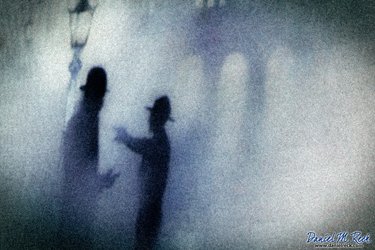
Lost in London’s fog in 1909, William D. Boyce was aided by an unknown Boy Scout doing his daily good turn. Impressed by the Scout’s devotion to principle, Boyce founded the Boy Scouts of America on February 8, 1910.
Mark Pulliam wrote a grim, and just slightly in-advance of the complete end, obituary for the Boy Scouts of America, once a widely popular boyhood rite of passage, imported a little over a century ago from Britain.
Sir Robert Baden-Powell, the hero of the Siege of Mafeking, dismayed at the lack of idealism, physical weakness, and unfamiliarity with the Out-of-Doors of Boer War recruits drawn from British industrialized cities, created an organization for boys specifically designed to inculcate manliness, virtue, and outdoor skills. Boys were encouraged to model themselves on the experienced and skilled frontiersman able to guide and reconnoiter for military forces in the Wild, on super-human figures like Frederick Russell Burnham, on the Scout. Boys should additionally be developed into patriots and Christian gentlemen of spotless honor, making a point of doing a good deed every day.
Baden-Powell invented the Scouting Movement specifically to oppose the negative influences of Modernity: moral relativism, effeminacy, cynicism, sloth, weakness, and self-indulgence. A bit over a century later, the BSA’s corporate leadership proved itself to be exactly like the rest of America’s national establishment: a pack of spineless, air-headed sheep ready to surrender quickly to the Sodomy and the Left’s Gramscian Long March Through the Institutions. It’s very, very sad.
While overall membership peaked in the early 1970s, the participation rate—the percentage of age-eligible boys who were members of the BSA—began to decline a decade (or more) earlier. The effect of this decline was disguised by increases in the U.S. population and expansion of the traditional scouting program. The heyday of the BSA coincided with the demographic bubble of post-WWII births—the Boomer generation. As this cohort grew up, the attention of American youths was distracted by other cultural influences: greater affluence, competing recreational activities, the proliferation of organized youth sports, the ubiquity of suburbia and its rich array of creature comforts, growing demographic diversity, and—in the past decade—the advent of computer games that now consume the interest of many boys.
The Boy Scout Law—with its embrace of religious faith (“reverence”) and heterosexuality (“morally straight”)—faced hostile headwinds in an increasingly secular and “tolerant” society. And, to be honest, in a youth culture increasingly sensitive to what is fashionable—a norm rigidly and relentlessly enforced by social media through the omnipresent smartphone—the Boy Scouts in recent decades was regarded as unacceptably “uncool.” In the 1950s and 1960s, peer pressure went in the opposite direction, reinforcing the attractiveness of scouting. Norman Rockwell’s cover illustration for the February 1965 issue of Boys’ Life depicts two parents proudly watching as their clean-cut son—standing at attention in a crisply-pressed uniform—receives his Eagle medal. Alas, times change. As the BSA’s membership began to decline, the national organization tried to remain “relevant,” adapting to America’s abrupt cultural and demographic shifts with responses that were sometimes clumsy and even counter-productive.
After decades of litigation brought by atheists and homosexuals regarding the BSA’s exclusionary membership requirements—which were upheld by the U.S. Supreme Court in the landmark case Boy Scouts of America v. Dale (2000) as the exercise of the BSA’s First Amendment rights—the BSA reversed itself by allowing gay youths full participation in 2014 and allowing openly gay adults as leaders in 2015. Instead of stemming BSA’s membership decline, the national leadership’s acquiescence to atheists and homosexuals—some believe due to pressure from major corporations whose financial patronage had become indispensable to the organization’s operation—only accelerated it.
With recent moves more closely resembling the actions of a Fortune 500 HR department, the BSA now has a Chief Diversity Officer, boasts a Diversity and Inclusion Statement, and in 2020 even proposed an Eagle-required merit badge requiring mastery of Diversity, Equity, and Inclusion to achieve scouting’s highest rank. This last innovation was apparently too much for traditionalists to swallow, and the proposed merit badge has been put on hold pending further study.
In the corporate jargon of the BSA’s national leadership, “The introduction of the proposed Diversity, Equity and Inclusion merit badge is being delayed to allow for the careful consideration and evaluation of feedback received from a wide variety of commenters on the draft requirements.” The New York Times reported that “The nonprofit also joined a growing number of organizations announcing public support for racial equality and the Black Lives Matter movement.” Earlier this year, the BSA’s century-old official publication, Boys’ Life, was renamed Scout Life in order to be gender-neutral.





Mike-SMO
“Morally Straight” was related to only one type of sexuality? Who knew? I always assumed that “Morally Straight” applied to all relationships with others. I guess I misunderstood.
Nori
Take a respected institution.
Kill it.
Gut it.
Wear its carcass as a skin suit.
And demand respect.
Iowahawk
Sounds more & more like America itself,at this point.
T. Shaw
File under “Asymmetric Justice.”
It’s like five-plus million. And, will not be on the front pages, sued, scandalized, “killed, gutted, or worn as a skin suit,” Recent reports indicate 10% of all public school children are sexually assaulted/molested by public school authority figures.
Public schools and unions are part of the oligarchy, a main cog in the brainwashing operation, and can do no wrong.
They ran the dysfunctional responses to the China virus. That was awesome!
Please Leave a Comment!